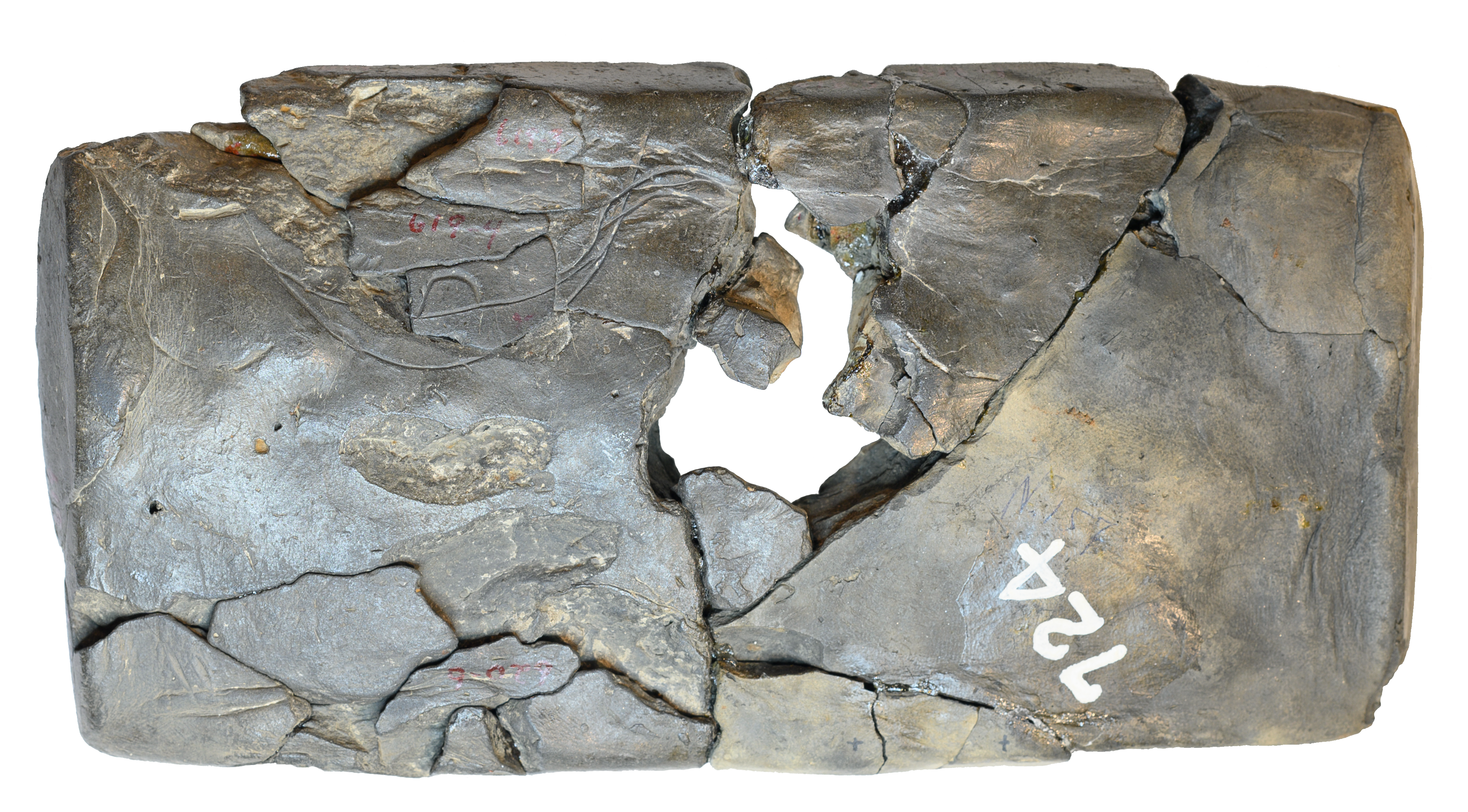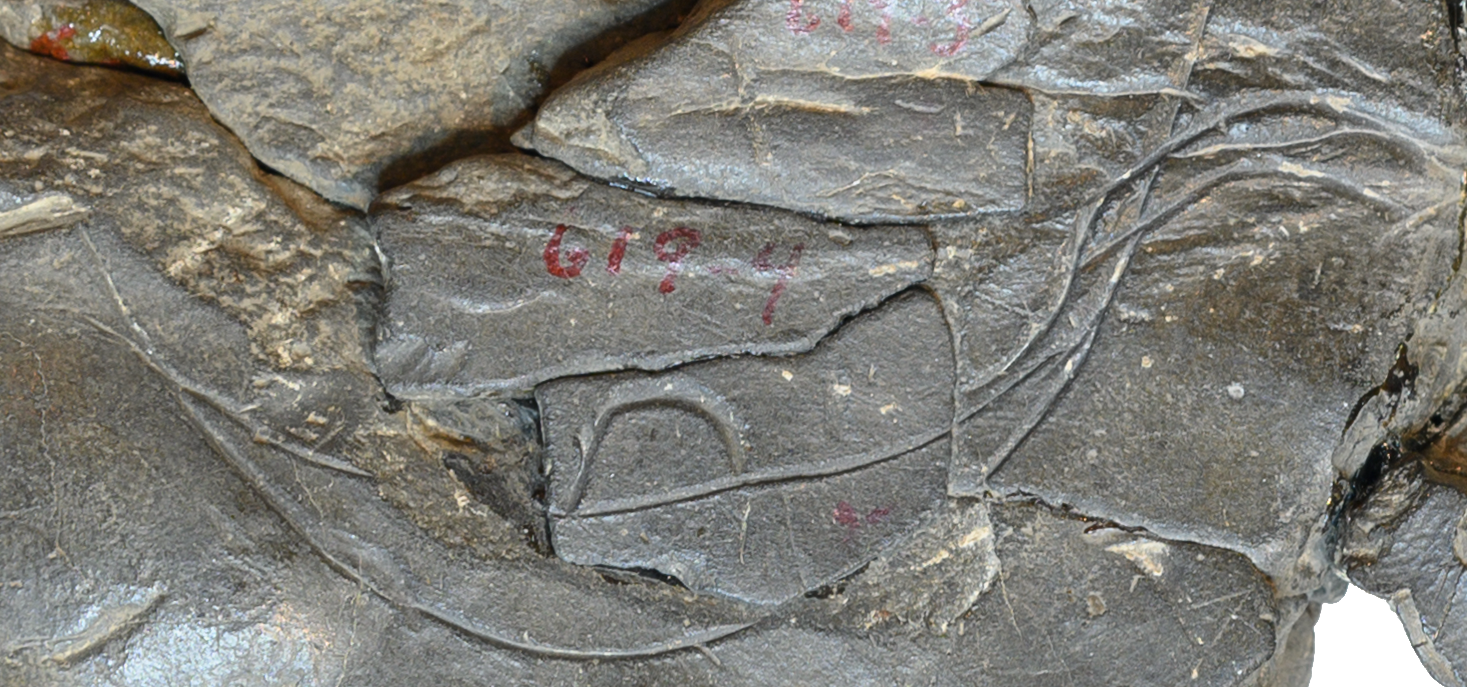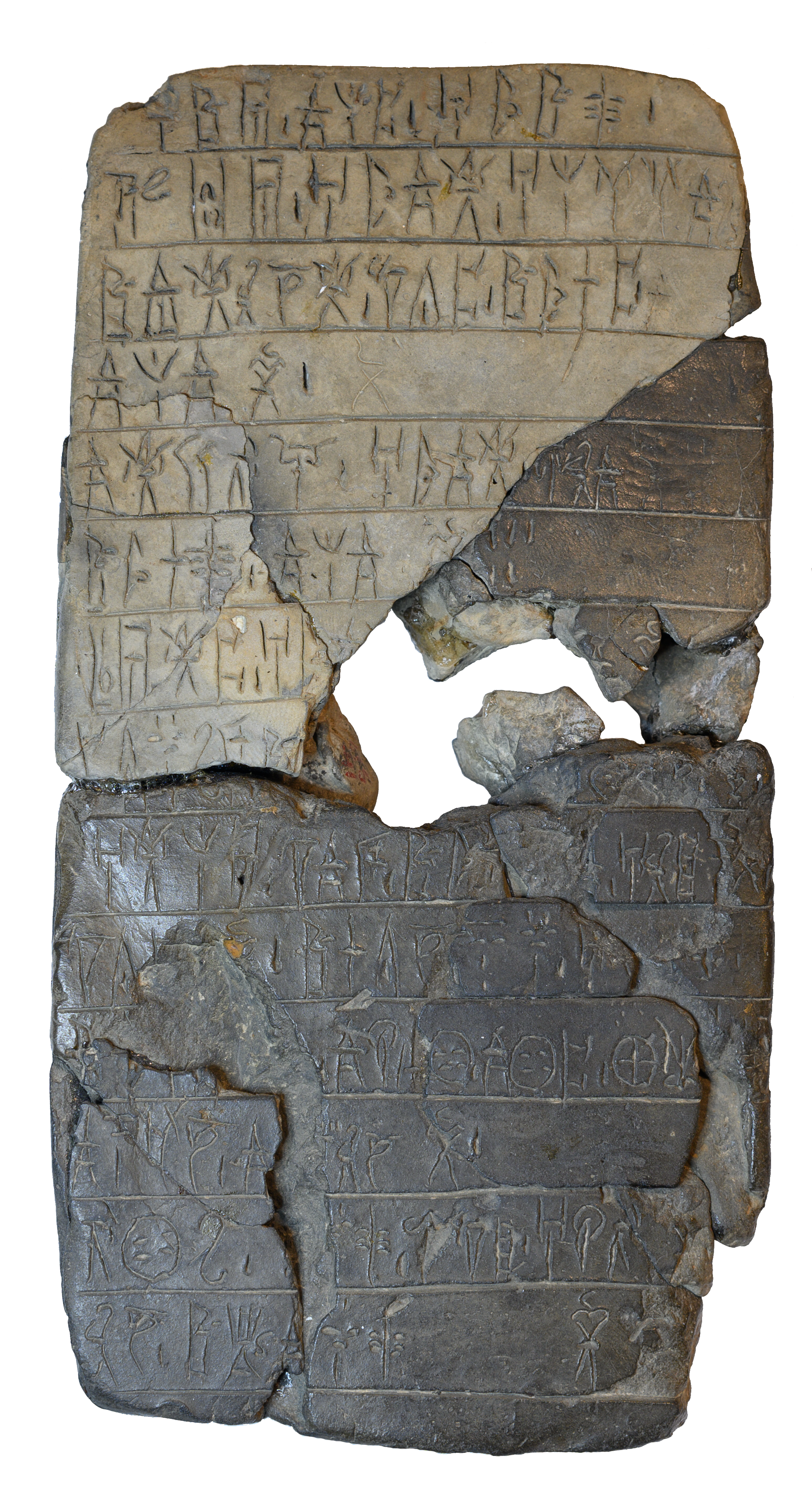Ship to the left. Crescentic hull with a pointed left extremity (stempost). The right post is higher and ends in multiple bifurcations (sternpost). Amidships there is a small semicircular construction. Wachsmann hypothesises that it is possible that the scribe was using a representation of a ship from his Linear B ideographic repertoire, itself derived from a ship type that was no longer commonly used. We know however that the Minoan ship (Type IV) continued in use at Pylos for ceremonial purposes, given that it is also attested from contemporary frescoes.
Ship graffito
A47
End of 13th century (LH IIIB)
Pylos, Palace of Nestor
Linear B clay tablet, heavily damaged with many erasures at line ends
Pylos tablet PY An 724. Athens National Archaeological Museum inv. HNAM Π 23769
Bennett 1955: 85; Del Freo 2002-2003; Marangou 1977: 50. No. MY 27; Morrison and Gardiner 2004: 24-25; Nikoloudis 2014: 234-235; Perpillou 1968: 210, n. 10; Wachsmann 1998:124-125, figs. 7.1-7.3; 1999; Wedde 2000: 328, no. 677
Written by the master scribe (Pylos Hand 1). The tablet shares vocabulary and place names with PY An 1. Four locations in the hither province are noted: ro-o-wa (line 1), a-ke-re-wa (line 9), wo-qe-we (line 13), ri-jo (line 14). The first and the last of these locations appear in the same order on consecutive lines in PY An 1. The first sections (lines 1-8) lists rowers who are absent (a-pe-o-te) from ro-o-wa. Del Freo has argued that these rowers were absent not because they had been excused from rowing service by their patrons, but rather because these settlers had been exempted from their other activities in order to perform their obligatory naval service (Del Freo 2002-2003: 153-164). This suggestion is supported by the correspondence between the total number of 8 rowers absent from ro-o-wa in An 724 and the 8 rowers recorded to originate from ro-o-wa said to be on their way to Pleuron in PY An 1. According to Palaima, "It is now clear that the design on the verso of the tablet, previously thought to resemble phonogram *35, is in fact also a sketch of a ship, executed no doubt by the scribe whose imagination drifted seaward because of his assignment on the recto, recording rowers missing at ro-o-wa*."(Palamia 1991: 287).
Line 4: specifies that one of the men is a "settler" who is "obligated to row."
Lines 5-6: list five more men "obligated to row" who have an association with the important person E-ke-ra-wo.
Line 7: man connected with the ra-wa-ke-ta ("military leader")
Line 8: another man
Line 9: lists individual men, at least one of them being associated with e-qe-ta ("followers") who were apparently high level administrative officials.
Line 14: possibly lists the largest single group of missing rowers (10+) at the site of ri-jo
Bennett, E. L. 1955. The Pylos Tablets. Princeton: Princeton University Press for University of Cincinnati.
Del Freo, M. 2002-2003. ‘La tablette An 724 de Pylos,’ Minos 37-8: 143-71.
Marangou, C. 1977. Les representations de bateaux dans la protohistoire égéenne. MA Thesis, Université de Paris (Panthéon-Sorbonne).
Morrison, J.S. and R. Gardiner. 2004. The Age of the Galley: Mediterranean oared Vessels since pre-Classical Times. 2nd edition. London: Conway Maritime Press.
Nikoloudis, S. 2014. “Working the Land: Ka-ma Plots at Pylos,” in D. Nakassis, J. Gulizio and S. A. James (eds.) KE-RA-ME-JA: Studies Presented to Cynthia W. Shelmerdine. Prehistory Monographs. Philadelphia, PA: INSTAP Academic Press, pp. 223-238.
Perpillou, J.-L. 1968. “La Tablette PY An 724 et le flotte pylienne,” Minos 9: 213-218.
Wachsmann, S. 1998. Seagoing Ships & Seamanship in the Bronze Age Levant. College Station, TX: Texas A&M University Press.
―――. 1999. “The Pylos Rower Tablets Reconsidered,” in H.E. Tzalas (ed.) Tropis V: 5th International Symposium on Ship Construction in Antiquity. Nauplia, 26, 27, 28 August 1993. (Hellenic Institute for the Preservation of Nautical Tradition). Athens: Hellenic Institute for the Preservation of Nautical Tradition, pp. 491-504.
Wedde, M. 2000. Towards a Hermeneutics of Aegean Bronze Age Ship Imagery. Peleus Studien zur Archäologie und Geschichte Griechenlands und Zyperns, vol. 6. Bibliopolis: Mannheim and Möhnsee.





